Right now this is just anything that comes to mind since I'm a complete noob at tumblr. I've been hearing about it for years but I never really felt like I had anything to say. Well all that has changed now and I figured I'd see what all the hype about tumlr is really about. Anyway don't take anything I say too seriously for now...I'll probably change it later when I become more comfortable with this website.
168 posts
Latest Posts by risingstarling - Page 5

Here is a 30 Minute At-Home Butt Lifting Workout

The Flat Belly Workout
How to burn calories
- Eat yogurt! Studies have shown that people who ate low fat yogurt lost 70% more fat than those who didn’t.
- The more you increase the intensity in your workouts, you’ll burn more fat faster than regular aerobic exercises.
- Iron helps oxygen get to your cells and if your cells aren’t getting enough oxygen, your metabolism will start to slow down.
- Drink water! Water helps your body perform better and increases your metabolism up to 30%. The colder it is, the better it is.
- Alcohol slows down your metabolism, it’s not healthy and you should try to stay away from it.
- Drinking green tea can increase your metabolism and it helps you burn up to 60 calories a day!
—
Please message me any tips you’d like me to post
Use the phrase "My understanding was..." instead of "I assumed..."
If you use the phrase “I assumed…”, you’ll be viewed as having hastily jumped to a conclusion based on insufficient evidence.
If you use the phrase “My understanding was…”, people will merely think you misunderstood something, and will be far kinder to you (and in instances where what you misunderstood was something they said, they will often apologize, or fault themselves for not being more explicit).
This is especially useful in a professional/workplace environment. Telling your supervisor you “assumed” something typically results in a reprimand; saying “My understanding was…” will instead be attributed to a miscommunication, or a lack of clarity in their original instructions.
Hello! Would you mind doing an example of not using filter words in a first person point of view? While I know that you can just switch out the pronouns for I/me/my, I just want to see it in action and when you should (and shouldn't) use the filter words. Thank you!
Hi there! I would love to! I think I’ll start out with an example with filter words and then cut out the filter words to show you the difference.
For those of you who haven’t seen my post on Filter Words.
Now, for the example:
I felt a hand tap my shoulder as I realized I had made a huge mistake. I knew the consequences would be unsettling, but I had no other choice. I saw the light of my desk lamp bounce off of the officer’s badge before I had even turned around. It seemed like I always found my way into trouble.
It was the first thing off the top of my head, so it’s a bit rough sounding….
Now for without filter words (And a bit of revision):
A hand tapped my shoulder as it dawned on me: I had just made a huge mistake. The consequences would be unsettling if I didn’t get out of this mess, but I had no other choice. The light of my desk lamp bounced off of the officer’s badge. I always found my way into trouble.
By taking out filter words, you get right to the point.
I’d also like to add a few more notes that I didn’t have the chance to post previously.
Some Examples of Filtering:
I heard a noise in the hallway.
She felt embarrassed when she tripped.
I saw a light bouncing through the trees.
I tasted the sour tang of raspberries bursting on my tongue.
He smelled his teammate’s BO wafting through the locker room.
She remembered dancing at his wedding.
I think people should be kinder to one another.
How can you apply this?
Read your work to see how many of these filtering words you might be leaning on. Microsoft Word has a great Find and Highlight feature that I love to use when I’m editing. See how you can get rid of these filtering words and take your sentences to the next level by making stronger word choices. Take the above examples, and see how they can be reworked.
FILTERING EXAMPLE: I heard a noise in the hallway.
DESCRIBE THE SOUND: Heels tapped a staccato rhythm in the hallway.
FILTERING EXAMPLE: She felt embarrassed after she tripped.
DESCRIBE WHAT THE FEELING LOOKS LIKE: Her cheeks flushed and her shoulders hunched after she tripped.
FILTERING EXAMPLE: I saw a light bouncing through the trees.
DESCRIBE THE SIGHT: A light bounced through the trees.
FILTERING EXAMPLE: I tasted the sour tang of raspberries bursting on my tongue.
DESCRIBE THE TASTE: The sour tang of raspberries burst on my tongue.
FILTERING EXAMPLE: He smelled his teammate’s BO wafting through the locker room.
DESCRIBE THE SMELL: His teammate’s BO wafted through the locker room.
FILTERING EXAMPLE: She remembered dancing at his wedding.
DESCRIBE THE MEMORY: She had danced at his wedding.
FILTERING EXAMPLE: I think people should be kinder to one another.
DESCRIBE THE THOUGHT: People should be kinder to one another.
See what a difference it makes when you get rid of the filter? It’s simply not necessary to use them. By ditching them, you avoid “telling,” your voice is more active, and your pacing is helped along.
The above list is not comprehensive as there are many examples of filtering words. The idea is to be aware of the concept so that you can recognize instances of it happening in your work. Be aware of where you want to place the energy and power in your sentences. Let your observations flow through your characters with immediacy.
Ok, sorry for the lengthy answer, I know you just wanted an example…. sorry!
If you have any questions, feel free to ask at my ask box
You can save money and potential worry after your dog eats something it isn't supposed to by calling the Pet Poison Hotline. 855-764-7661.
855-764-7661
My dog Katie recently got into a bottle of calcium, potassium and vitamin D3 pills. Worried, I rushed her to the vet’s office. They induced vomiting, gave her activated charcoal and a referral to a 24/7-pet hospital–For which they charged me close to $300.
When we arrived at the hospital, the new vet told us about the hotline. It costs $49, but they keep files on all sorts of breeds and incidences of poisoning–the vet told us that the hotline’s advice is gospel. Also, it costs more money if the vet places the phone call, so you should do this on your own.
Luckily, my dog just needed a lot of fluids and the charcoal seemed to absorb most of the nasty stuff, but I could have saved a lot of money by A) calling the hotline in the first place, and B) keeping activated charcoal with my pet supplies.
site that you can type in the definition of a word and get the word
site for when you can only remember part of a word/its definition
site that gives you words that rhyme with a word
site that gives you synonyms and antonyms
Do the thing. I believe in you.
Motivation. What a thorn in our collective sides, right? You pick something to do and for whatever reason… you don’t do. You do the opposite of do, you don’t and then you get absolutely nowhere and you just blankly stare at the thing and nothing changed because you still haven’t gotten up, you still haven’t started, and eventually it all snowballs.
So you ignore it. You give up. You think about it from time to time, shaking your head in disgust at yourself because you couldn’t do something as simple as start the thing you wanted to do in the first place – if you would have started it when you originally wanted to, you’d have been done with it by now! The snowball keeps rolling. The frustration and anxiety gets worse. How can you even think about starting it now, because all of a sudden it’s not so simple. You’ve made a metaphorical mountain out of a metaphorical molehill (unless you really are dealing with a molehill, in which case I am sorry for your yard).
Breathe, friend.
I have been down this terrible path before, and I’m sure I’ll go down it again. In fact, I’m facing similar thoughts when it came to making this blog. I really wanted to create a blog where I could share my knowledge, and learn more from those around me and generally have a safe space for everyone on their life journey of becoming a better person. It took forever for me to just stop thinking and start doing. I’m still trying to just keep doing. Let me try to help you do the same: Do.
So you want to do a thing.
Well that’s the first step. Saying “Hey, I want to organize my room” or “I think it’s time for me to clean the kitchen” is a great way to start. Recognize what it is you want to accomplish in your end game.
However, don’t get overzealous. “I want to organize my room” can become a daunting task if you try to do it all at once. A good tip is to make it a project – trying to finish it all in one go is a good way to get burnt out before you even start! Instead make a list and check it off as you go.
Example:
Make the bed
Clear off bookshelves
File away desk papers
Dust the corners
Fold the laundry
Vacuum the floor
A list like this seems a lot more manageable mentally than just saying “Organize the room” and as you check things off you’ll feel accomplished, which helps your motivation to continue on your project.
Be proud of any bit you get done. Managed to clean off one of your shelves? Good job, you! You’re that much closer to finishing that task! Which means you’re practically almost done with your project! It can be really motivating to feel like you’re getting closer to your end goal.
Sometimes we all need a little push in the right direction and maybe even a little company. Invite a friend over and tell them what your goal is. They can help by giving you a hand and maybe assist by directing you where to go. Surrounding ourselves with people who have a good directional skill can help lead the effort.
Putting on entertainment as background noise can also help. I personally like to listen to one of the Crash Course series (Right now I’m on Anatomy and Physiology) or to Mental Floss videos while I work because it gives my brain something other than the ever increasing list of to-dos I face to think about. It’s hard to stress about stuff I don’t think I’ll ever be able to get done when I’m too busy listening to videos and then… what do you know, I’ve completed half my to do list without freaking out about how much I had to do!
It can can be hard to just motivate yourself to get out of bed, let alone take on any other sort of project aside from the act of being alive. Just know that you deserve a gold star for waking up, double gold stars for getting out of bed and triple gold stars for even glancing out the window. Some days are better than others, but no matter what it is you want to accomplish… you can do it. I know you can.
For other great resources to help with your motivation, check out the following links:
How to Adult – Procrastination/Getting Things Done
Lifehack - Ways to deal with Motivation Loss
WVU Student Wellness - How to Motivate/Do Practically Anything
Part one: money, leases, landlords, legal stuff
what papers do i need to rent a house?
Not a ton. You usually need your social security number, a driver’s license or state ID card, and copies of your paystubs or some other form of proof of income.
What is a mortgage and how does it work? Is renter’s insurance necessary? What do I do if my landlord is in violation of the lease?
A mortgage is a loan from the bank to buy a house. It’s a combination of the amount borrowed and the interest accrued. You agree to pay back the loan over a set period of time, in monthly payments. It’s a lot more involved than that so I guess let me know if you want more info on that, but you don’t really need to know about that until you’re purchasing a property.
Renter’s insurance is required by most landlords. This is so the insurance company covers it if your home is damaged by a natural disaster or a car through your wall or something. It also covers your home getting broken into. Renter’s insurance is really cheap, I think mine is $10 a month or something.
If your landlord is in violation of the lease, go above them and talk to their supervisor or the property management company. If they aren’t responsive then go to a tenant’s rights group in your area, or contact the Department of Housing (depending on how big the issue is).
hey how are you! been following you awhile now. just wondering like how much money you should save before moving out, some tips for people not making a lot of money and dying to leave their parents lol
The general rule is 3 months of living expenses plus emergency money. This should include: 3 months of rent, 3 months of utilities, 3 months of transportation expenses (bus/train fare or gas + auto insurance), 3 months of food, 3 months of phone/internet, 3 months of miscellaneous household shit
I’ll give you the breakdown for my house as an example:
$1300 rent x 3
$100 utilities x 3
$60 phone x 3
$70 internet x 3
$75 auto insurance x 3 OR $100 bus fare x 3
$200 food x 3
$50 houshold x 3 (toilet paper, toothpaste, paper towels, soap, cleaning supplies, towels, etc)
medical expenses, personal expenses, etc not included
$5565 total (not including gas because i forgot it)
Also, you need to put down a deposit on a unit and usually first months rent + last months rent. Deposits are generally one month worth of rent. This means total move in expenses for my house (NOT including utilities set up fees, internet fees, or any household expenses) were $3900 to my landlord.
Also broker’s fees are a thing in big cities but not Seattle.
You also have to factor in general house shit like furniture, silverware, towels, blankets, etc. Having zero furniture is cool for awhile but will make you crazy in a short period of time (example: I lived in an apartment with no dresser, couch, chairs, or desk for six months. My only furniture was a tiny bookshelf and a mattress. It was the worst. I was only living there temporarily and didn’t want to move furniture when I moved into my permanent house).
I don’t have any credit (never had a credit card, loans, etc.) will it be hard for me to get a place to rent?
In my experience, many places are wary of renting to people without credit. I think what generally turns them off is that you have never paid bills so they have no idea of knowing if you’ll be able to make rent on time. Oftentimes they will ask for a cosigner on a lease if you don’t have credit. This means that your parent or relative (or anyone really) will sign the lease with you and also have their name on there. This is so that if you stop paying your rent, fuck up the apartment, etc, if they are unable to find you or you will not pay the rent/charges, your cosigner is responsible for paying them.
I recommend paying bills in your name or getting a credit card and using it RESPONSIBLY. That means utilizing 30% or less of your total credit available, and always making payments ON TIME, ABOVE the minimum payment. Pay a small bill that gets paid every month for sure with a credit card, like your phone bill or the internet bill.
I also recommend just moving into an established house and being put on the lease that way, or subletting. That way even though you don’t have credit you have rental history and references.
I know that when you rent a house you have to pay for things other than rent, what kind of stuff is normally included in that and how much is a reasonable amount to pay?
Other bills are generally water, sewer, garbage, and electricity, but it varies by location. In some states heating is separate, and it’s required for the landlord to pay the heating bill (though this may mean that they leave it on all winter and you cook, or they leave it on but really low and you freeze). The most common thing I’ve seen is that landlords pay w/s/g, and you pay for electricity. Again, this varies greatly by location. For example, my electricity gets billed 4x a year, so they’re pretty large bills when they come in, but it isn’t a monthly expense. Seattle is super mild so we don’t have air conditioning or regularly use heaters. We’re also running my boyfriend’s giant computer all the time. Our bills are generally $250-$350 every three months. This is split between four people so it’s not that bad, never more than $100 every cycle. But I gotta stress that this varies from place to place. I have friends that live in large houses with 5-6 people and their utilities are about $100 a month per person, on top of rent. You need to ask the landlord what they cover and what the utilities usually come out to every month.
HORROR STORIES/PREVENTATIVE MEASURES
When making your master post about basic tips etc, I’d like to share my horror story. I only turned on the water faucets in my bathroom not the kitchen and it turned out the cold water didn’t work. In addition the faucet was missing an aerator too so the water was super wiley. Ugh and I should mention I moved from an apartment on the 3rd floor of a building to the 10th and apparently the 10th floor has bug problems I could not foresee. Maybe some tips for prevent buggies?
Fuck that sucks. Bug tips right here. Know what they look like, don’t take furniture from the street!!!!!
WARNING SIGNS
what are some things you should watch out for when looking for somewhere to rent? With the landlord?
Unit: Lots of discarded furniture outside/by the dumpster/in communal spaces (bedbugs). Dirty communal washing machines. Dirty lobbies. Weed smell (personal preference lol). Indoor smoking. Established (5 years or older) building and many empty units. Many people leaving after year-long leases.
Landlord: Are they shady? Do they tell you about their drug habits? Do they use hard drugs? Do they accept 12 applications even though they know that the first person is going to get the unit (applications are $20-$50 each usually)? Do they avoid showing you parts of the building? Are they creepy? Do they hit on you? These are all things I have had happen when looking for a place and they were all huge red flags. Don’t rent from someone that does any of those things.
im viewing an apt tomorrow and making a list of questions to ask landlord. is there anything specific i should ask thats often forgotten?
What are the utility bills generally running each month? How long do tenants usually live in the unit? How much has the rent increased over the last three years? What kind of people live in the apartments (families, students, DINKs?)?
disclaimer: all of this varies place to place, city to city, state to state, etc. this is just based on my experiences viewing hundreds and hundreds of houses and apartments in seattle.
How To Adult
For those of you who need the nudge, here are some resources that’ll hopefully help you.
Organization
Things to include when setting up a new planner
How to organize your day
The best pens for planning
Login & password tracker printable
2015′s most popular planners
Questions to help you de-clutter
Brilliant organizing solutions
Career
How to look good in a group interview
An introvert’s guide to self-promotion at work
Career planning 101
36 career tips no one will actually tell you
Best resume tips
What to do if you don’t know the answer to the interview question
A guide to cover letters
Mental & Physical Health
How to become a morning person
Why you feel tired everyday
Water intake and your diet
Finding happiness when life gets hard
Books to read when you need a laugh
Books to read in your twenties
What your gyno really wants you to know
How to wake up happy
Become a morning person
Your guide to medical check-ups (extremely important!)
When you need to get checked by a doctor timeline
Relationships
Free weekend date ideas
9 conversations every serious couple should have
Date ideas for $10 and under
Summer couple’s bucket list
Fall couple’s bucket list
50 things to do besides watch a movie
Miscellaneous
How to make small talk
Use the Internet when there is no Internet
Which glue should you use?
How to properly tip
Expiration dates of beauty products
How to increase cell phone storage
Clothing care / laundry symbols
A guide to dealing with hangovers
Do I need a photo ID to do this?
Documents you need before you die
100+ things to throw away
How to buy a car
Cooking / Food
Using your hand to find portion control sizes
How to cut a recipe in half
Grocery shopping like an adult
Kitchen measurement cheat sheet
Meals on the go
The shelf life of food infographic
Helpful kitchen cheat sheet
What pasta goes with what sauce?
How to pair candy with alcohol
Foods that are hazardous to dogs
Home / Apartment
Apartment inspection checklist
Planning a move in advance
Make moving easier
How to keep a clean home
Cleaning schedule printable
Car cleaning hacks
Things to do before moving out of your home
Checklist for changing your address
How to take care of your car
First place checklist
Things you can clean in the dishwasher
Finding an affordable apartment
Rental walk-through checklist
What to handle first after moving
Finances
Making and living on a budget
How to start couponing
Making a budget binder
Credit score basics
Save money on utilities
Financial habits to start right now
Get help with medical bills
How to save money every week
When airline tickets are the cheapest
Couponing for beginners
Budgeting in your home
Create a calendar budget
Get your finances under control
my parents aren’t teaching me life lessons.
#i need some adults to TEACH ME SHIT ABOUT LIFE
whenever i’m talking to someone and they tell me about something that happened to them i always tell them about something that happened to me that’s similar to what happened to them. i do it as kind of a “oh hey yeah this happened to me so i can relate to what you’re going through” but i’m always afraid it comes out as “oh yeah well this happened to me so clearly i have it tougher than you” or “i’m done talking about you let’s talk about me”
i swear i don’t mean it like that……..
Actually
The question I get the most is how I write characters that feel like real people.
Generally when I’m designing a human being, I deconstruct them into 7 major categories:
1. Primary Drive 2. Fear: Major and Secondary 3. Physical Desires 4. Style of self expression 5. How they express affection 6. What controls them (what they are weak for) 7. What part of them will change.
1. Primary Drive: This is generally related to the plot. What are their plot related goals? How are they pulling the plot forward? how do they make decisions? What do they think they’re doing and how do they justify doing it. 2. Fear: First, what is their deep fear? Abandonment? being consumed by power? etc. Second: tiny fears. Spiders. someone licking their neck. Small things that bother them. At least 4. 3. Physical desires. How they feel about touch. What is their perceived sexual/romantic orientation. Do their physical desires match up with their psychological desires.
4. Style of self expression: How they talk. Are they shy? Do they like to joke around and if so, how? Are they anxious or confident internally and how do they express that externally. What do words mean to them? More or less than actions? Does their socioeconomic background affect the way they present themselves socially? 5. How they express affection: Do they express affection through actions or words. Is expressing affection easy for them or not. How quickly do they open up to someone they like. Does their affection match up with their physical desires. how does the way they show their friends that they love them differ from how they show a potential love interest that they love them. is affection something they struggle with?
6. What controls them (what they are weak for): what are they almost entirely helpless against. What is something that influences them regardless of their own moral code. What– if driven to the end of the wire— would they reject sacrificing. What/who would they cut off their own finger for. What would they kill for, if pushed. What makes them want to curl up and never go outside again from pain. What makes them sink to their knees from weakness or relief. What would make them weep tears of joy regardless where they were and who they were in front of.
7. WHAT PART OF THEM WILL CHANGE: people develop over time. At least two of the above six categories will be altered by the storyline–either to an extreme or whittled down to nothing. When a person experiences trauma, their primary fear may change, or how they express affection may change, etc. By the time your book is over, they should have developed. And its important to decide which parts of them will be the ones that slowly get altered so you can work on monitoring it as you write. making it congruent with the plot instead of just a reaction to the plot.
That’s it.
But most of all, you have to treat this like you’re developing a human being. Not a “character” a living breathing person. When you talk, you use their voice. If you want them to say something and it doesn’t seem like (based on the seven characteristics above) that they would say it, what would they say instead?
If they must do something that’s forced by the plot, that they wouldn’t do based on their seven options, they can still do the thing, but how would they feel internally about doing it?
How do their seven characteristics meet/ meld with someone else’s seven and how will they change each other?
Once you can come up with all the answers to all of these questions, you begin to know your character like you’d know one of your friends. When you can place them in any AU and know how they would react.
They start to breathe.



As requested! A tutorial on faces will be coming soon as well.






Making a comic background with a photo tutorial
Making Your Characters Stronger
A lot of people confuse character strength with physical strength. It’s awesome if your female character can beat up 30 people in a room, but what does that actually tell us about her? There needs to be something more than just that.
So, how do you make your characters legitimately stronger? Here are a few tips to get your started:
Give them a goal
All characters should want something. It can be something small, like getting a good grade on a test, or it can be something big, like saving the world. Know your characters and what their goals are. This should help you shape the plot and prevent writer’s block.
Let them grow
Character growth is something that makes your story fascinating. Each character should make a change or grow, especially if you want your readers to root for them. This is usually the case with protagonists because common antagonist traits are that they are stubborn and they might not grow very much. Let us see your protagonist learn and become a stronger hero.
Define their character traits
You can make a character more relatable if you know what their traits are. Is your protagonist cautious? Are they afraid of failure? Are they lazy? Knowing specific details about your characters can help your story feel more real. You’ll actually get to know who your characters are and why they’d react a certain way.
Build relationships
Let your characters love or hate or have great friendships. Your character’s connection to other people in the story will help make them stronger. They’ll have more motivation to fight til the end and they’ll have something they care about. Don’t neglect these relationships.
Let them fail
A strong character doesn’t mean they do everything perfectly and lack struggle. Your characters need to fail. Most of us don’t get stronger by constantly succeeding. We fail, we pick ourselves back up, and we keep going. This will help keep your protagonist relatable and your readers will continue to root for their success.
-Kris Noel
Why do artists refuse to use references why why why.
It’s not a contest to see who can get by without them. It’s not cheating to look at a thing in order to know what the thing looks like.
You don’t get stronger or better by pretending. Nobody is impressed by the awkward whatever-it-is you just drew. Use references.


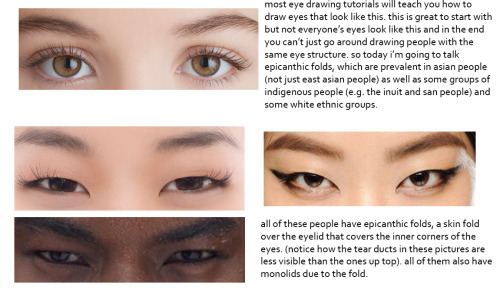
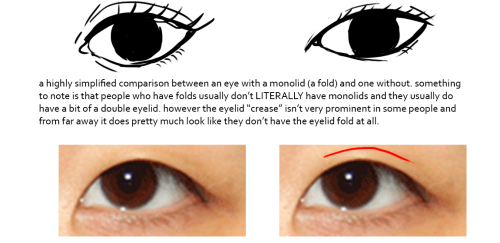


this was gonna be a tutorial and i guess it still is but if anything it’s just a really long and drawn out “essay” on drawing people with epicanthic folds. one of my biggest pet peeves is people drawing asian people exclusively with the same type of eye they’d give white people or anyone else who typically doesn’t have the fold! however i know that most people are taught with the standard white person eye (google image search for “eye” and it’ll all be pictures of white people’s eyes) so learning to draw epicanthic folds is a consciously learned thing.
therefore i bring you this, which attempts to break the mechanics of epicanthic folds down into something that’s a bit easier to digest and implement in your own art!
style can be argued i guess but it’s not that hard to stylize eyes with folds if you do proper observation and research. eyes with epicanthic folds are as diverse as eyes without so it’s not like you have to adhere to a strict model for them (although many people think that you have to) and all it takes to distinguish the two in stylized art (and even in semi/realism once you think about it) is a few lines! like i said this is a learned process but it’ll make your asian characters (and characters of other races even) a bit more interesting and believable.



Cat Behavior
Your Character’s Personality
Personality is the most important thing about your character.
So, whenever I see character sheets, most people just put a little paragraph for that section. If you’re struggling and don’t know what your character should say or do, what decisions they should make, I guarantee you that this is the problem.
You know your character’s name, age, race, sexuality, height, weight, eye color, hair color, their parents’ and siblings’ names. But these are not the things that truly matter about them.
Traits:
pick traits that don’t necessarily go together. For example, someone who is controlling, aggressive and vain can also be generous, sensitive and soft-spoken. Characters need to have at least one flaw that really impacts how they interact with others. Positive traits can work as flaws, too. It is advised that you pick at least ten traits
people are complex, full of contradictions, and please forgive me if this makes anyone uncomfortable, but even bullies can be “nice” people. Anyone can be a “bad” person, even someone who is polite, kind, helpful or timid can also be narcissistic, annoying, inconsiderate and a liar. People are not just “evil” or “good”
Beliefs:
ideas or thoughts that your character has or thinks about the world, society, others or themselves, even without proof or evidence, or which may or may not be true. Beliefs can contradict their values, motives, self-image, etc. For example, the belief that they are an awesome and responsible person when their traits are lazy, irresponsible and shallow. Their self-image and any beliefs they have about themselves may or may not be similar/the same. They might have a poor self-image, but still believe they’re better than everybody else
Values:
what your character thinks is important. Usually influenced by beliefs, their self-image, their history, etc. Some values may contradict their beliefs, wants, traits, or even other values. For example, your character may value being respect, but one of their traits is disrespectful. It is advised you list at least two values, and know which one they value more. For example, your character values justice and family. Their sister tells them she just stole $200 from her teacher’s wallet. Do they tell on her, or do they let her keep the money: justice, or family? Either way, your character probably has some negative feelings, guilt, anger, etc., over betraying their other value
Motives:
what your character wants. It can be abstract or something tangible. For example, wanting to be adored or wanting that job to pay for their father’s medication. Motives can contradict their beliefs, traits, values, behavior, or even other motives. For example, your character may want to be a good person, but their traits are selfish, manipulative, and narcissistic. Motives can be long term or short term. Everyone has wants, whether they realize it or not. You can write “they don’t know what they want,” but you should know. It is advised that you list at least one abstract want
Recurring Feelings:
feelings that they have throughout most of their life. If you put them down as a trait, it is likely they are also recurring feelings. For example, depressed, lonely, happy, etc.
Self Image:
what the character thinks of themselves: their self-esteem. Some character are proud of themselves, others are ashamed of themselves, etc. They may think they are not good enough, or think they are the smartest person in the world. Their self-image can contradict their beliefs, traits, values, behavior, motives, etc. For example, if their self-image is poor, they can still be a cheerful or optimistic person. If they have a positive self-image, they can still be a depressed or negative person. How they picture themselves may or may not be true: maybe they think they’re a horrible person, when they are, in fact, very considerate, helpful, kind, generous, patient, etc. They still have flaws, but flaws don’t necessarily make you a terrible person
Behavior:
how the character’s traits, values, beliefs, self-image, etc., are outwardly displayed: how they act. For example, two characters may have the trait “angry” but they all probably express it differently. One character may be quiet and want to be left alone when they are angry, the other could become verbally aggressive. If your character is a liar, do they pause before lying, or do they suddenly speak very carefully when they normally don’t? Someone who is inconsiderate may have issues with boundaries or eat the last piece of pizza in the fridge when they knew it wasn’t theirs. Behavior is extremely important and it is advised you think long and hard about your character’s actions and what exactly it shows about them
Demeanor:
their general mood and disposition. Maybe they’re usually quiet, cheerful, moody, or irritable, etc.
Posture:
a secondary part of your character’s personality: not as important as everything else. It is advised you fill this out after. Posture is how the character carries themselves. For example, perhaps they swing their arms and keep their shoulders back while they walk, which seems to be the posture of a confident person, so when they sit, their legs are probably open. Another character may slump and have their arms folded when they’re sitting, and when they’re walking, perhaps they drag their feet and look at the ground
Speech Pattern:
a secondary part of your character’s personality: not as important as everything else. It is advised you fill this out after. Speech patterns can be words that your character uses frequently, if they speak clearly, what sort of grammar they use, if they have a wide vocabulary, a small vocabulary, if it’s sophisticated, crude, stammering, repeating themselves, etc. I personally don’t have a very wide vocabulary, if you could tell
Hobbies:
a secondary part of your character’s personality: not as important as everything else. It is advised you fill this out after. Hobbies can include things like drawing, writing, playing an instrument, collecting rocks, collecting tea cups, etc.
Quirks:
a secondary part of your character’s personality, not as important as everything else. It is advised you fill this out after. Quirks are behaviors that are unique to your character. For example, I personally always put my socks on inside out and check the ceiling for spiders a few times a day
Likes:
a secondary part of your character’s personality, not as important as everything else. It is advised you fill this out after. Likes and dislikes are usually connected to the rest of their personality, but not necessarily. For example, if your character likes to do other people’s homework, maybe it’s because they want to be appreciated
Dislikes:
a secondary part of your character’s personality, not as important as everything else. It is advised you fill this out after. Likes and dislikes can also contradict the rest of their personality. For example, maybe one of your character’s traits is dishonest, but they dislike liars
History:
your character’s past that has key events that influence and shape their beliefs, values, behavior, wants, self-image, etc. Events written down should imply or explain why they are the way they are. For example, if your character is distrustful, maybe they were lied to a lot by their parents when they were a child. Maybe they were in a relationship for twenty years and found out their partner was cheating on them the whole time. If their motive/want is to have positive attention, maybe their parents just didn’t praise them enough and focused too much on the negative
On Mental and Physical Disabilities or Illnesses
if your character experienced a trauma, it needs to have an affect on your character. Maybe they became more angry or impatient or critical of others. Maybe their beliefs on people changed to become “even bullies can be ‘nice’ people: anyone can be a ‘bad’ person”
people are not their illness or disability: it should not be their defining trait. I have health anxiety, but I’m still idealistic, lazy, considerate, impatient and occasionally spiteful; I still want to become an author; I still believe that people are generally good; I still value doing what make me feel comfortable; I still have a positive self-image; I’m still a person. You should fill out your character’s personality at least half-way before you even touch on the possibility of your character having a disability or illness
Generally everything about your character should connect, but hey, even twins that grew up in the same exact household have different personalities; they value different things, have different beliefs. Maybe one of them watched a movie that had a huge impact on them.
Not everything needs to be explained. Someone can be picky or fussy ever since they were little for no reason at all. Someone can be a negative person even if they grew up in a happy home.
I believe this is a thought out layout for making well-rounded OCs, antagonists and protagonists, whether they’re being created for a roleplay or for a book. This layout is also helpful for studying Canon Characters if you’re looking to accurately roleplay as them or write them in fanfiction or whatever.
I’m really excited to post this, so hopefully I didn’t miss anything important…
If you have any questions, feel free to send a message.
- Chick


Made this because my friend didn’t know this was a thing, so I thought maybe others don’t either? Hope it helps someone out!
100 Delicious, Dirt-Cheap Recipes for the Starving Student
Most students don’t have a lot of cash to spend on food, but that doesn’t mean you have to go hungry. With the right recipes and some kitchen savvy, you can eat great even on a student’s budget. Here we’ll share 100 tasty recipes that you can make on the cheap. Along with saving money on meals, budget-savvy students can also save big on a college education by attending inexpensive online colleges.
Breakfast
Get a good start to your day with these cheap-o breakfasts.
Hash browns: Hash browns are cheap and easy to make, and cheaper than a trip to IHOP.
Puff pastry chicken and bacon: You can make bacon and chicken in puff pastry using this recipe.
Microwave scrambled eggs: Make scrambled eggs in the microwave with this recipe.
Breakfast burritos: You can make these burritos ahead for a quick microwave breakfast.
Onion quiche: This quiche makes a delicious, incredibly cheap breakfast.
Omelet in a bag: Boil eggs and some handy ingredients for this simple, cheap omelet.
Frittata: Add eggs to cheese, vegetables, and herbs you have handy in your fridge to make a frittata.
Ramen
A college staple gets dressed up in these recipes.
Antipasto ramen salad: With ramen, pepperoni, black olives, onion, and Italian dressing, you’ll find yourself with a great ramen salad.
Beef & Broccoli Stir Fry Ramen: This dish makes a delicious stir fry from ramen.
Chinese style ramen with veggies: Make your ramen a little bit healthier with some vegetables added in.
Ramen noodle alfredo: Turn your ramen noodles Italian with this recipe.
Beef & Broccoli Ramen: Add some meat and veggies to your ramen to make this dish.
Spring ramen salad: Take a fresh approach to ramen with recipe.
Hamburger ramen: Ground beef with ramen makes for a great meal.
Chicken hollandaise ramen: Add chicken and hollandaise to your ramen for this meal.
Egg drop noodle soup: You’ll combine ramen, eggs, and flour to make this tasty soup.
Lo mein ramen: Follow this recipe for ramen lo mein style.
Creamy veggies and ramen: Add celery soup and vegetables to ramen, and you’ll have a great meal.
Pasta ramen salad: Use ramen as the base to make this delicious pasta salad.
Sandwiches
Use these recipes to step up your sandwiches.
Hot Dog Egg Sandwich: Get a good portion of protein and flavor from this sandwich.
Egg Salad Sandwich: Cook up some hard boiled eggs for a cheap, tasty sandwich that’s really versatile.
Monte Cristo Sandwich: This sandwich is a delicious hybrid of grilled ham, cheese, and french toast.
Grilled chicken and apple sandwich: This hot sandwich is healthy, affordable, and delicious.
Canned salmon sandwich: Add celery, horseradish, and swiss cheese for a delicious, healthy meal from a can.
Turkey, chutney and avocado grilled sandwich: This sandwich is an exotic, cheap treat.
Grilled Cheese Sandwich: The classic college staple, grilled cheese sandwiches pack a lot of flavor for very little cost.
One Pot
These simple recipes can be pulled off in one pot.
Creamy cauliflower soup: This vegetable soup is cheap, easy, and surprisingly tasty.
Cheap chili: Use chopped beef, tomatoes, and more for this cheap chili.
Butternut Squash Soup: Take advantage of cheap winter vegetables with this soup.
Slow cooker BBQ chicken: Combine cut up chicken with your favorite barbeque sauce for this recipe.
Crockpot lemon chicken: Get inexpensive cuts of chicken and make this lemony meal for lots of flavor without lots of money.
Minestrone soup: Eat this classic soup for a healthy, cheap meal.
Cheeseburger soup: This soup is hearty enough to be a meal.
Slightly Italian crockpot chicken recipe: With chicken, artichoke, onions, and spices, you’ll get an Italian chicken meal in a slow cooker.
Cranberry pot roast: Beef roast and cranberries offer a lot of flavor in this crockpot meal.
Crockpot potato soup: Make this soup from chicken broth and potatoes.
Corn, Bacon, and Potato Chowder: This hearty chowder is great for winter eating.
Chilled avocado soup: Check out this recipe for a healthy, refreshing treat.
Slow cooker pulled pork: Make pork shoulder in the crock pot using this recipe.
Middle East Chicken Soup: This ethnic chicken soup is a cheap, tasty, treat.
Bean soup: In this bean soup recipe, you’ll find lots of protein for just a little money.
Salads
Use these healthy recipes to make cheap, delicious salads.
Caesar salad: Combine romaine lettuce, parmesan cheese, croutons, and dressing for a classic salad.
Simple spinach salad: In this tasty salad you’ll find sweet pears and spinach.
Bowtie Pasta Salad: Throw together some pasta, tomatoes, and other vegetables for this salad.
Cucumber salad: This salad is fresh, delicious, and cheap.
Caprese salad: This caprese salad is simple and delicious.
Chicken Caesar salad: Eat this recipe as a salad, or put it into a wrap for a healthy, cheap treat.
Simple green salad: Here you’ll find a simple, inexpensive salad with great flavor.
Pecan mandarin orange salad: Get a bright and sweet salad from this recipe.
Cucumber salad with sour cream: This salad is cheap and refreshing.
Salmon orzo salad: With salmon filets, or even canned salmon, you can put together this salad treat.
Casserole
You’ll find delicious casseroles in these recipes.
O’Brien Casserole: Use O’Brien potatoes, beans, lean meat, and some veggies for a great potato casserole.
Baked Tuna Chow Mein Microwave Casserole: Pop this tuna casserole in the microwave for a quick meal.
Easy cheap casserole: This casserole combines easy, affordable ingredients.
Penne Pasta Casserole: Make this tasty pasta casserole for $3 or less.
Meatloaf: ground beef combined with ketchup, onions, and more makes a great meal for less than a dollar per serving.
Four Bean Casserole: This casserole is popular at potlucks and with barbequed meals.
Tuna casserole: With canned tuna, you can make a healthy, delicious tuna casserole on the cheap.
Pizza & Pasta
Get your grains with these recipes.
Microwave Mexican pizza: Use tortillas, cheese, salsa, and sour cream for this pizza.
Bagel pizza: Use this recipe to make pizza on a bagel.
Spaghetti: Pick up multigrain pasta with tomato sauce and mushroom for a big meal without a big budget.
Feast of Pasta: Create this casserole with pasta, onions, and other simple ingredients.
Shrimp with ricotta sauce on pasta: Upgrade your pasta dish with this recipe.
Easy calzones: Use cheese, vegetables, and pepperoni in these easy calzones.
Olio e Aglio Pasta: This side dish combines angel hair with oil and garlic.
Pasta salad: Combine your favorite pasta with salad dressing, and olives, vegetables, or herbs you have handy.
Pasta and Ricotta Cheese: This pasta favorite is a crowd pleaser.
Entrees
These recipes offer affordable main dishes.
Baked potato: Often served as sides, a baked potato can be the main dish-just add lean meat, beans, or chili.
Mexican hot dogs: This twist on hot dogs is extra delicious.
Chili: With beef, tomatoes, and beans, you can make a delicious chili.
Tuna patties: Put tuna, egg, relish, crumbs, salad dressing, and other simple ingredients together to create yummy tuna patties.
Cheap beef stroganoff: This recipe offers a cheap version of beef stroganoff.
Vegetarian chili: Use soy protein, tomatoes, and beans for a protein and fiber packed chili without any meat.
Eggplant parmesan: Eggplant parmesan makes a cheap and delicious vegetarian meal.
Vegetarian sweet and sour tofu: If you’re looking for a great vegetarian meal on the cheap, check out this recipe.
Parmesan chicken: With breadcrumbs, parmesan, and chicken, you can make this very tasty main dish.
BBQ chicken: Slather chicken with barbeque sauce, pop it in the oven, and enjoy.
Lemon Herb Roasted Chicken: Make some delicious chicken in a slow cooker with this recipe.
Salmon patties: Use canned salmon, bread crumbs, and other simple ingredients for this healthy, cheap dish.
Meatballs and orzo: Make these easy meatballs instead of using store bought frozen ones.
Sides
Use these recipes to complement your entrees on the cheap.
Buttered baby carrots: Sweet, tender carrots make up this side dish.
Roasted asparagus: Follow this simple recipe for a healthy, cheap vegetable side.
Spicy mac: Make macaroni and cheese with Taco Bell hot sauce.
Garlic toast: Use this recipe for delicious garlic bread that will please any taste.
Microwave macaroni and cheese: Make your own homemade mac and cheese in the microwave.
Pesto stuffed cherry tomatoes: Pesto, ricotta, and tomatoes come together for this delicious side that’s great for potlucks.
Scalloped potatoes: These scalloped potatoes are easy and creamy.
Bean and rice salad: This salad is delicious and cheap.
Green beans amandine: With this recipe, you can omit almonds for even more money savings.
Onion scones: In these simple scones, you’ll find lots of flavor.
Potato croquettes: These croquettes are a great way to use your leftover mashed potatoes.
Twice-baked potatoes (microwave): Make this cheap potato classic in the microwave for easy cooking.
Broccoli and cauliflower salad: This salad is cheap and packed full of nutrients.
Desserts
Satisfy your sweet tooth with these affordable dessert recipes.
Chocolate chip cookies: Create cookies with chocolate chips, M&Ms, nuts, or even pretzels with this recipe.
1 step brownies: Turn a chocolate box cake into simple, cheap brownies using this recipe.
Balsamic strawberries with marscapone cheese: A few delicious ingredients make for a tasty, cheap treat.
Cheap and quick cookies: This recipe will show you how to turn cake into cookies.
Lemonade pie: Simple ingredients go into this delicious, cheap pie.
Easy baked apples: Apples, brown sugar, cinnamon, butter, and raisins come together in this microwave recipe.
Super easy microwave peanut butter fudge: Only two simple ingredients to into this peanut butter fudge.


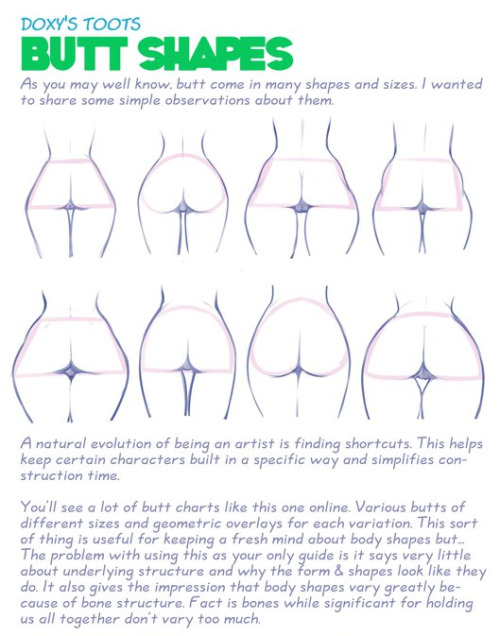

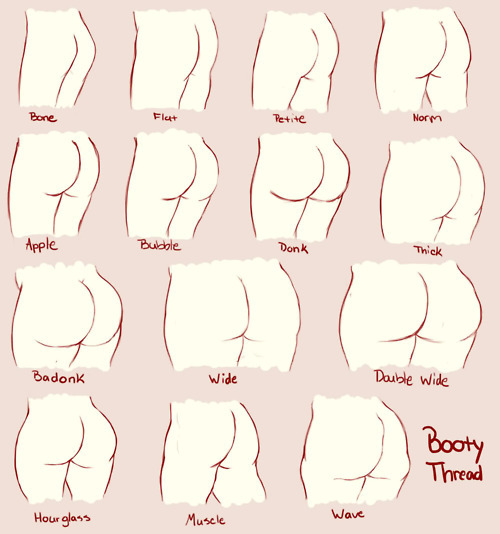


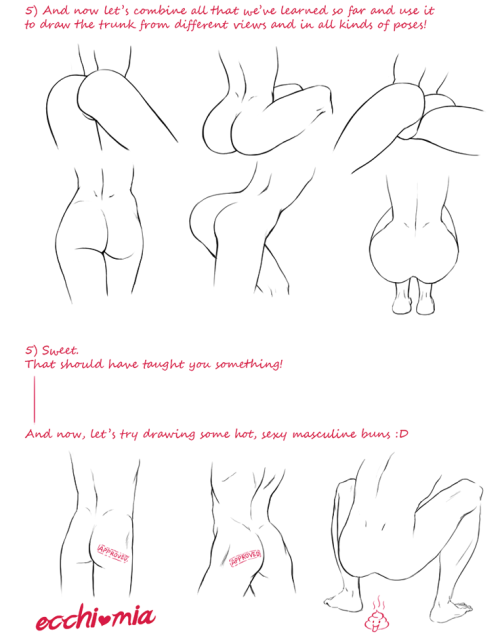
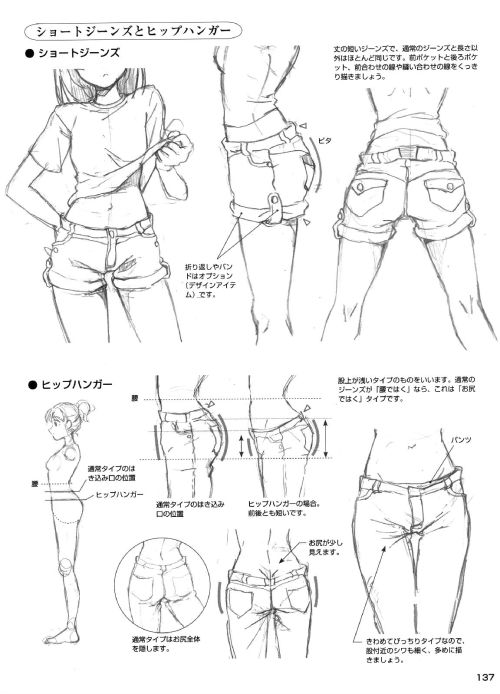
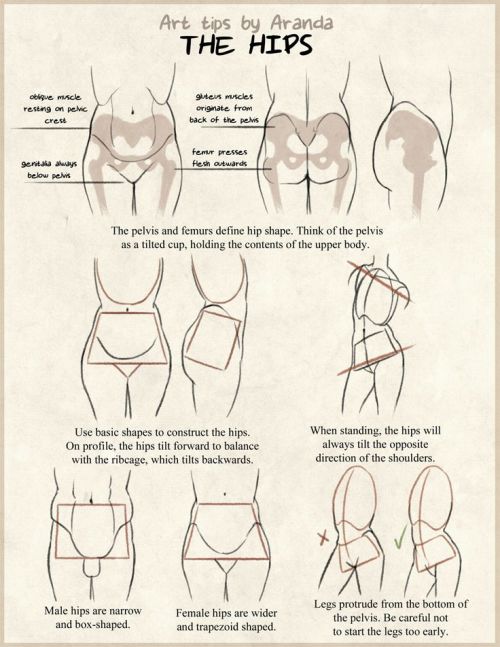
How to Draw a Damn Fine Ass Top Image, Row 5 & 6 Row 2: Drawing People by Barbara Bradley Row 3 Row 4 Row 5 Bottom Image

me: lmao fuckin weeaboos amiright? with all their fuckin animoo-
me: *sees a cherry blossom falling*
me: *internally* kISS KISS FALL IN LOVE



On the Shelves in Oxford this week we have two books focusing on two of our favourite things- literature and happiness!
Thinking with Literature offers a new perspective for mainstream literary criticism and the value of close reading, and demonstrates viability of cognitive analysis of all kinds of literature.
Happiness Explained shows how a wide range of factors can contribute to better and happier lives and how, together, they provide a new blueprint for assessing progress in terms of personal wellbeing.
Photos by Yasmin Coonjah for Oxford University Press.

Body Language Is More Revealing Than Words: How to Read People More Clearly
Our bodies can often be more honest than our words when it comes to communicating our thoughts, feelings, and intentions.
When we choose what to say, we’re often using the executive parts of our brains (the “neocortex”). This part of the brain is responsible for conscious attention, language, and thinking, all of which we have a degree of control over with some effort.
Because we have a choice in what we say, this makes it easier to conceal, deceive, and lie with our words.
However, we don’t usually choose our body language, which comes from the automatic parts of our brains (the “limbic system”). This part of the brain is responsible for our emotions, instincts, and gut reactions, all of which we don’t normally have control over.
According to What Every Body Is Saying: An Ex-FBI Agent’s Guide to Speed-Reading People, because our body language is more automatic than our speech, this makes it harder to conceal, deceive, and lie about our true thoughts and feelings through our bodies.
Therefore, if you want to learn how to better read people and understand what’s going on inside their minds, you need to listen more to what their bodies are communicating to you. Especially if it doesn’t match up with what they are saying.
Most of us know how to choose our words carefully. We are taught from an early age how to act polite and kind even when we don’t want to – or how to tell a harmless lie to protect someone’s feelings (“Thanks for the birthday gift! I always wanted socks!”)
However, we don’t often pay attention to what our body language is communicating. And because it happens automatically without us deliberately choosing, it’s harder to override how our body responds to a situation. Our bodies rarely lie.
In this article, I will share basic guidelines on what to look for in body language. This can also be a valuable resource in learning what your own body is communicating to others, perhaps without you even realizing it.
Click here to read more

Hand Tutorial -Tips+Reference- by =Qinni
Great hand tips by =Qinni! ^.^

DeviantART – ArandaDill



http://sevencamels.blogspot.ca/2008_12_01_archive.html